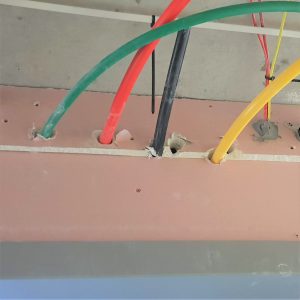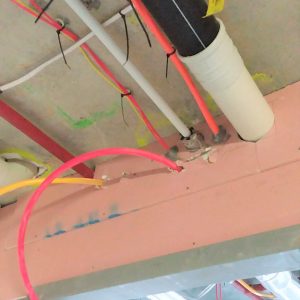Mandatory inspections to all penetrations through fire and smoke resisting elements were introduced on 2 June 2018 following evidence that works required to resist the spread of fire were not being carried out adequately.
Unsealed penetrations are unable to provide protection against the spread of smoke, heat and toxins. Despite their often insignificant appearance, the consequences of inadequate protection, can leave building occupiers vulnerable to potential injury in a fire scenario.
Fire-resisting walls, floors and ceilings are installed to slow or stop the spread of fire through a buildings fire or smoke compartment or between separate tenancies, therefore, unsealed penetrations could reduce the effectiveness/ fire resistance level.
What is required to be inspected?
Class 2, 3 and 4 Buildings
- Any lightweight construction building component that is required to resist the spread of fire in at least one apartment in each storey.
- One of each stair, lift or service shaft of lightweight construction required to resist the spread of fire in each storey
- Components and junctions of the building components listed above
Class 2, 3, 4, 9a or 9c Buildings
- Fire protection method for one of each service penetrations in any building element required to resist the spread of fire on each storey.
Penetration Compliance Requirements
Penetrations including, but not limited to, Metal Pipe Systems, Pipes penetrating sanitary compartments, wires & cables, electrical switchboards & outlets and fire stopping must comply with National Construction Code – Building Code of Australia 2016, Volume 1, Amendment 1, Clause C3.15 and Specification C3.15.
The following images depict non complying penetrations
Related Posts
May 24, 2017
Fire Services During Building Construction
The VBA have identified a number of commercial and major residential development sites that do not…
November 30, 2016
Fire Door Safety
Fire doors are primarily designed to delay the spread of fire and smoke from one compartment area…
May 25, 2016
Fire Services Statutory Signage
All fire safety services require signage to ensure compliance with the National Construction Code.…





